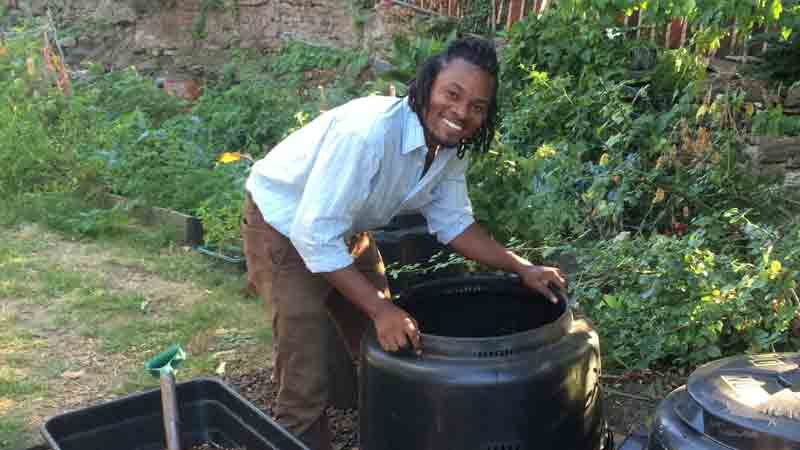
Nora Goldstein
Business as usual is anything but usual, as all of you are likely experiencing as well. We are grateful that organics recycling — from collection to processing to sale and distribution of end products — is deemed an essential service and thus able to continue. But there have been significant impacts, for example, the reduced generation and collection of source separated food waste and other organics from commercial and institutional establishments.
At the same time, we’ve heard anecdotally that there has been an increase in demand for residential collection of food scraps, primarily by existing subscription collection services. Many of these households might normally drop their food scraps off at designated locations in the community, e.g, farmers markets, recycling depot, etc. It would be fascinating to learn if existing curbside collection programs are seeing a jump in household participation given the amount of food preparation at home (and hopefully not due to overbuying fresh food that has not been eaten in time).
One data point for gauging household activity with regard to recycling food scraps is the explosion of interest in home composting. A webinar hosted last week by the Institute for Local Self-Reliance (ILSR) and featuring Brenda Platt of ILSR and renowned vermi-guru Rhonda Sherman of North Carolina State University had over 1,400 registrants from 43 U.S. states and 25 other countries. “Over half of the total registrants are home gardeners,” reports Sherman. The webinar was accompanied by the launch of ILSR’s new home composting website and an incredibly well done and easy-to-understand home composting resource tool.
On the markets side, we’ve heard that compost sales are booming — also attributed to millions of people following stay-at-home orders and planting gardens and amending landscapes and turf. Seed companies are sold out of product, and garden centers are selling out of bedding plants.
The $64,000 question is, will this continue once we move away from pandemic mode? Will household behavior go back to business as usual once hectic lives begin anew? Hopefully these new behavior patterns will become ingrained, especially when households harvest the fruits of their labor — the produce, fresh flowers and compost! It will be critically important for local agencies to capitalize on these new behavior patterns and encourage participation in curbside collection, drop-off and home composting, and to continue purchasing compost.
Strike While The Iron Is Hot
One measurable benefit of the pandemic is the reduction in carbon emissions as a result of stay-at-home orders. While that may be challenging to continue once people head back to work, air travel, shopping and play, newly adopted household food scraps recycling and compost use behavior practices should not be difficult to carry forward. The key, is connecting these new practices to reduction in carbon emissions (by recycling the food scraps) and increasing carbon sequestration (by using the compost on soils).
Local agencies can have some fun with this. Provide households tips on tracking the weight of the food scraps being home composted or recycled through a curbside pick-up or drop-off program. Make it easy to record and report the weight and then track the climate benefits using a landfill methane avoidance calculator. Go even further and estimate how much compost will be made with those food scraps (e.g., using a calculation based on a ratio of 3:1 or 4:1 yard trimmings to food scraps). Then plug that amount into a soil carbon sequestration calculator.
The good news is that some of these calculator tools are already out there. Take a look at the Impact Page on Compost Now’s website, for example. It calculates that its members have diverted over 23.1 million lbs of food waste since 2011, avoiding over 2.2 million lbs of methane emissions by composting.
Very early on in this pandemic, I was envisioning the parallel of the world’s rapid adoption of new behaviors to comply with stay-at-home orders to stay healthy against the invisible enemy of COVID-19, to that of the invisible enemy of climate change. With climate change the impacts are subtle (or not apparent at all), and only become “real” to people during intense weather events, dramatic and devastating wildfires, record soaring temperatures, melting icebergs, and severe and frequently recurring flooding. Achieving dramatic reductions in carbon emissions to reverse or at least mitigate the impacts of climate change requires rapid adoption of new behaviors around the world. The human toll of not changing behaviors will likely far surpass that of COVID-19.
For the past several months, we humans have shown we are capable of dramatic behavior change. But maintaining this change — whether because of coronavirus, or going back to the parallel, of climate “virus” — is the challenge that lies ahead. Science and best practices will catch up to guide us in our COVID-19 response. For organics recycling, we have the science, technologies, and best practices in hand to rapidly deploy in a global climate virus response. When deployed in concert with science, technologies, and best practices across all sectors, from transport and energy to food production and water, the climate virus enemy can be debilitated and eventually, destroyed.










